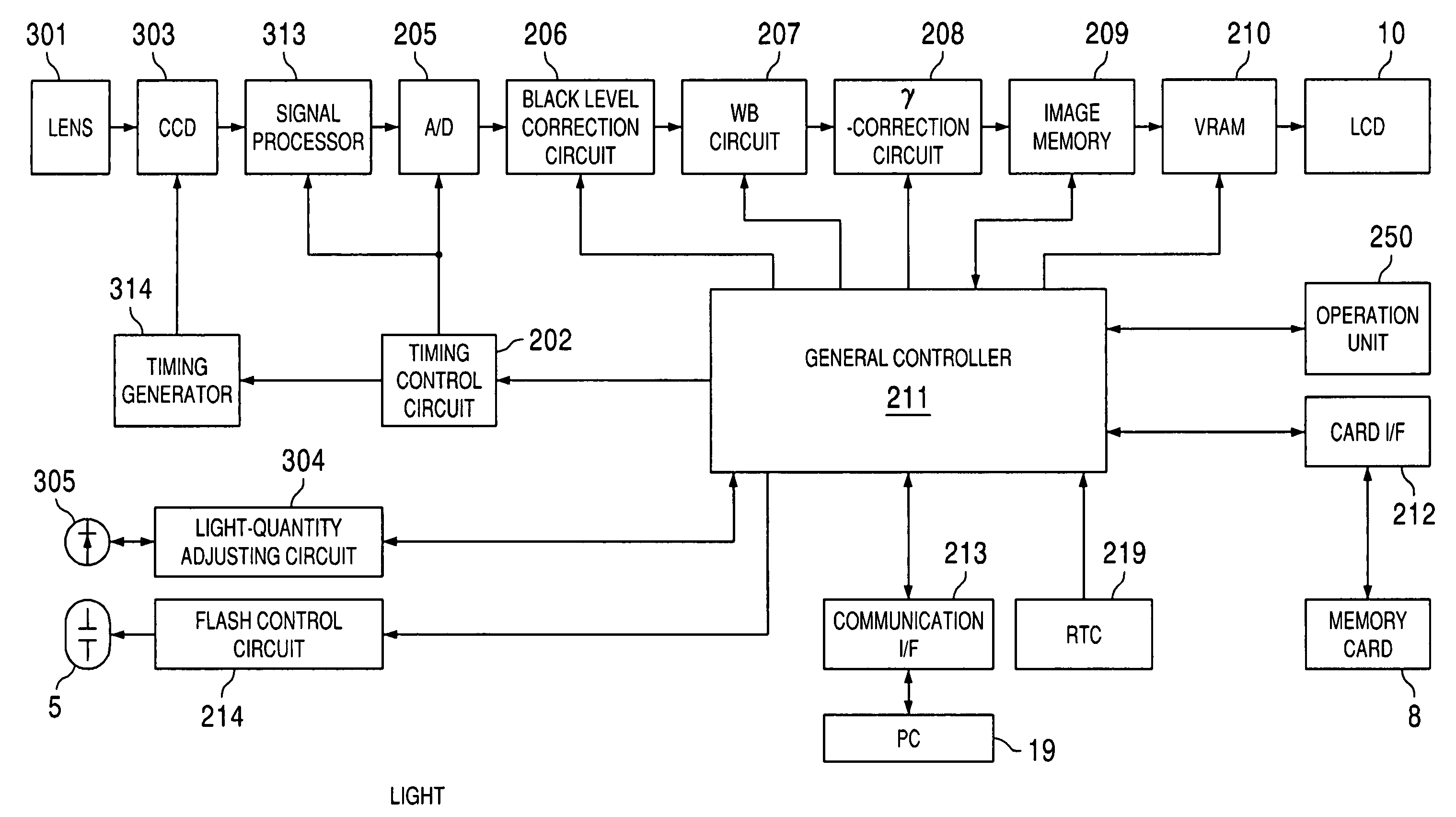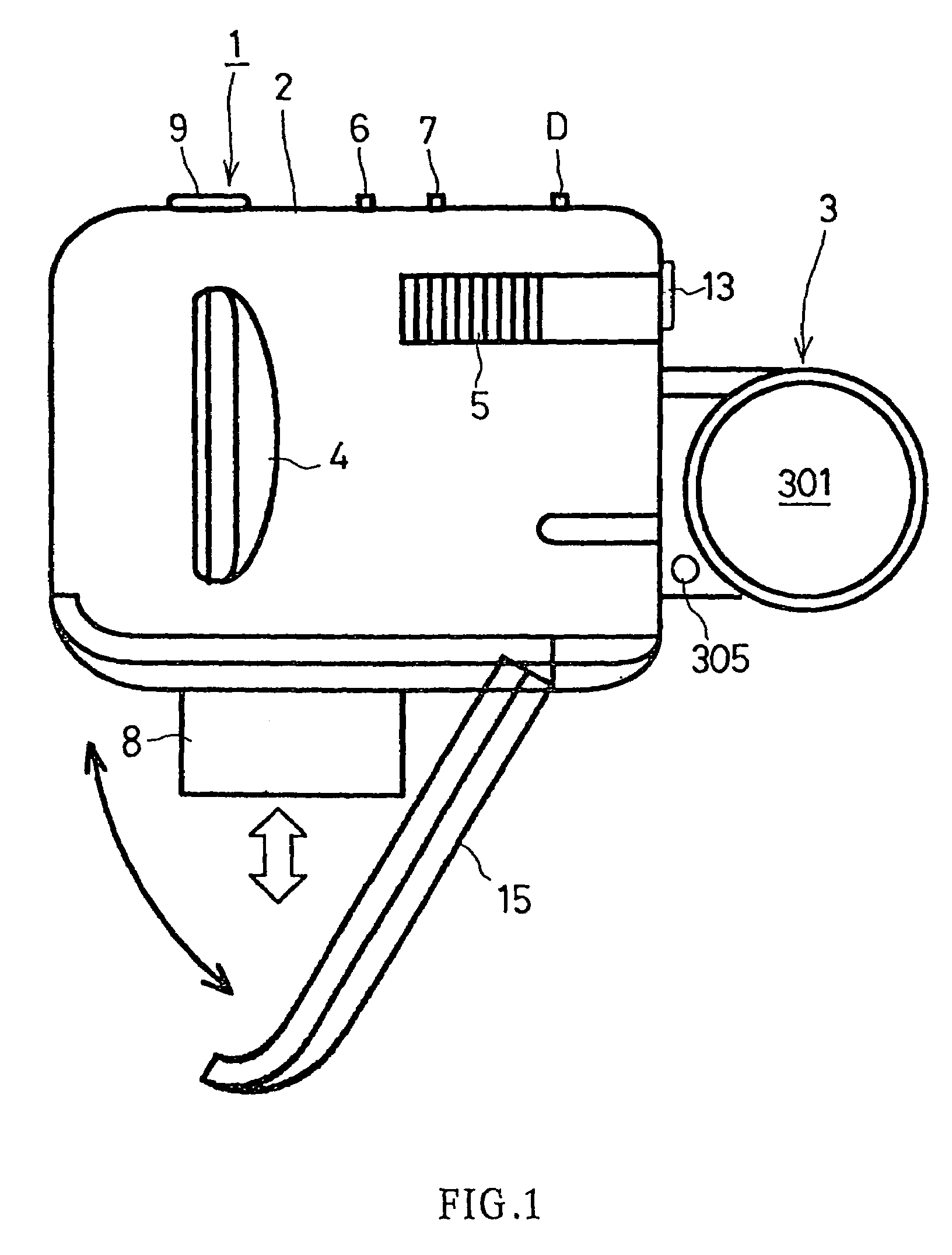Digital camera having automatic exposure control for different photographing modes
- Summary
- Abstract
- Description
- Claims
- Application Information
AI Technical Summary
Benefits of technology
Problems solved by technology
Method used
Image
Examples
Embodiment Construction
[0024]As shown in FIGS. 1–3, a digital camera 1 comprises a camera frame, which is referred to as a main body 2, and a photographing unit 3 which is attachable to and removable from the main body 2 on the right side of the main body 2 in the front view shown in FIG. 1. The photographing unit 3 is pivotable within a plane parallel to the right side of the main body 2.
[0025]The photographing unit 3 has a photographing device comprising a macrozoom lens 301 and a photoelectric conversion device such as a CCD (Charge Coupled Device) array, to convert the optical image of an object into an electric image consisting of charge signals, each of which was generated by each pixel of the CCD via photoelectric conversion. The main body 2 has a display or LCD (Liquid Crystal Display) 10, a slot 17 for receiving a memory card 8, and a connection terminal 13 for connecting the digital camera 1 to a personal computer. The image signal taken by the photographing unit 3 is subjected to a prescribed i...
PUM
 Login to View More
Login to View More Abstract
Description
Claims
Application Information
 Login to View More
Login to View More - R&D
- Intellectual Property
- Life Sciences
- Materials
- Tech Scout
- Unparalleled Data Quality
- Higher Quality Content
- 60% Fewer Hallucinations
Browse by: Latest US Patents, China's latest patents, Technical Efficacy Thesaurus, Application Domain, Technology Topic, Popular Technical Reports.
© 2025 PatSnap. All rights reserved.Legal|Privacy policy|Modern Slavery Act Transparency Statement|Sitemap|About US| Contact US: help@patsnap.com



